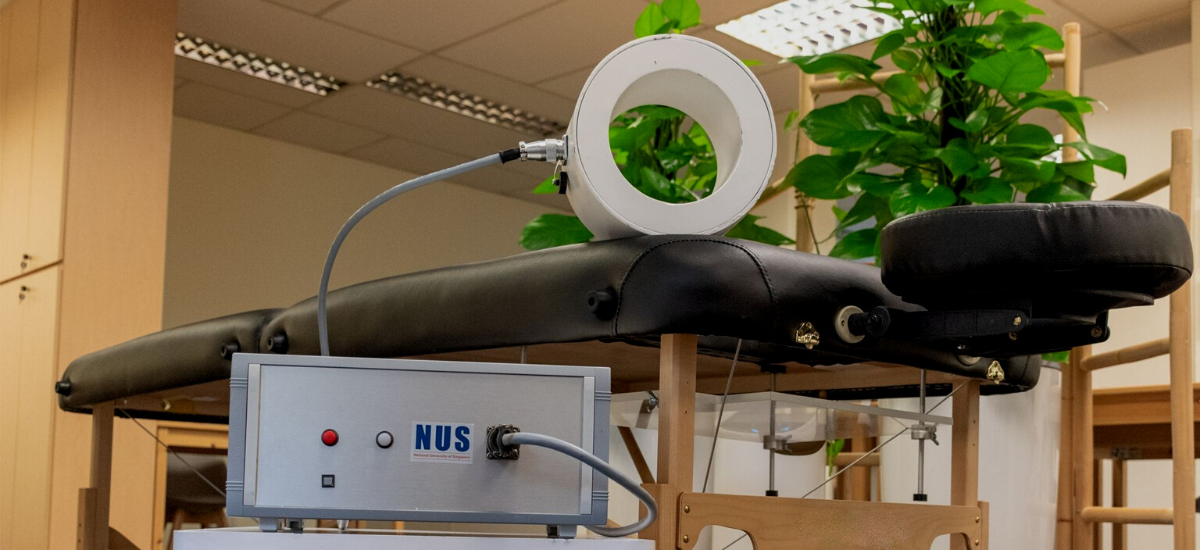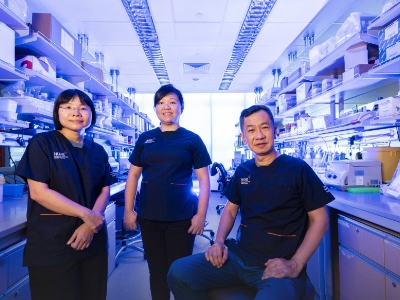Published on 29 August 2022
Researchers create a localised, non-invasive, and painless breast cancer treatment to help patients better tolerate chemotherapy and increase success rates.
Chemo wreaks havoc on the system. But in many cases, it’s still your best bet to survive cancer – especially breast cancer, where chemotherapy remains the treatment of choice.
Granted, it’s certainly no fun to live through. Nausea, lethargy, impaired heart function, and even muscle, hair, and memory loss are just a few of the many possible side effects. In some cases, chemotherapy can also affect the brain. Cancer survivors sometimes report ‘chemo brain’ or ‘chemo fog’ – thinking and memory problems that occur during and after cancer treatment.
These symptoms are far from uncommon. In one study surveying breast cancer patients, 93% of women reported at least one side effect from breast cancer chemotherapy, and 45% said they had at least one severe or very severe side effect. Occasionally, the symptoms can become so severe that the patient is unable to continue with treatment, spelling disaster as this can worsen a patient’s prognosis.
“If you have to be taken off chemo because of side effects, it means that your body has been weakened – chemo does that to muscle, which is an important resource to combat disease. During chemo, this important role of muscle is compromised and, because of this, the patient is set up for failure as you’ve now weakened the main tissue that can fight against cancer, and have also taken away the treatment,” explained Prof Alfredo Franco-Obregón, Associate Professor at National University of Singapore, Yong Loo Lin School of Medicine (NUS Medicine).
This begs the question: is there no way to moderate the side effects of chemo, or potentially combine it with an alternative treatment that isn’t as harsh on the body, and still get similar success outcomes?
2ba47f30-add5-4bd8-a45b-968587b2c1e4.png?sfvrsn=558e7bcd_2)
This is exactly what Prof Alfredo Franco-Obregón and his team at NUHS are working on. The team is pioneering a complementary treatment for breast cancer: magnetic therapy.
This treatment is designed to be non-invasive, more penetrative to cancer tissue, and most importantly, localised. Because it works in tandem with chemotherapy, a patient may ultimately be able to undergo fewer chemo treatments or lower doses, leading to fewer or less intense side effects.
.png?sfvrsn=42420e64_2)
How does magnetic therapy work?
To understand how magnetic therapy works, we must first understand how cancer works.
Cancer occurs when cells over-multiply. Cancer has a high metabolic rate, as the cells in question multiply at rapid speed. To do this, these cells respire more actively – or ‘hyperventilate’ – and use oxygen at a very high rate to support their high energy demand.
Usually, the oxygen we inhale is processed into harmless water. Because cancer cells are hyperventilating, however, some of this oxygen is not processed rapidly into water but, instead, becomes toxic; molecules called reactive oxygen radicals are produced and the cancer cells, in effect, begin to poison themselves.
What magnetic therapy essentially does is to expose these already hyperventilating cancer cells to pulses that activate cellular metabolism. In other words, magnetic therapy encourages cancer cells to increase respiration and further poison themselves – a situation that makes chemo much more effective and the cancer cells much easier to kill.
As a result, lower or fewer doses of chemo may be able to do the job.
Benefits of magnetic therapy
This new treatment has several potential upsides. First, unlike chemotherapy which is delivered to the entire body through the bloodstream, magnetic therapy is a localised therapy; the treatment can target only a specific area. This means that any potential side-effects will also be localised to tissue that is exposed. That said, Prof Franco-Obregón and his team have encountered no side effects on healthy tissues as yet.
Further, magnetic therapy can penetrate ‘dead spaces’, or areas outside the bloodstream path that chemotherapy drugs can’t reach. Prof Franco-Obregón explained, “the treatment can be targeted to penetrate deep into a tumour mass that is devoid of blood circulation.”
A novel technique
As this is a fairly new technique, it would be usual to wonder if there are any safety risks. Fortunately, preclinical studies have been promising: so far, no side effects of magnetic therapy or damage to collateral tissues have been detected.
“All living organisms are well adapted to magnetic fields and they are evolutionarily required for life. Our magnetic therapy is similar in magnitude with the magnetic fields that are emitted from a laptop,” Prof Franco-Obregón explained, adding that the therapy appears to be highly selective for cancer cells.
“Nonetheless, we will still want to ascertain its safety in the coming Phase 1 trial, especially in terms of wound-healing in patients who are on neoadjuvant chemotherapy. We want to make sure our magnetic therapy would not impede the normal wound healing of patients who will undergo breast surgery,” he added.
At the moment, the therapy is still in its early trials, with several more phases to go. Upon final ethical approval, the first-in-human safety trial will start in the second half of 2022.
“Afterward, we will perform a dose-efficacy Phase 2 trial to determine the right dose for breast cancer patients. This is followed by a Phase 3 trial which aims to test the effectiveness of our magnetic therapy in a larger, predetermined cohort,” Prof Franco-Obregón said.
Within four years, the team expects that they will have a medical device. It will likely take at least seven years to reach the hospitals.
Future applications
Although the current trial is focused on breast cancer, patients with other types of cancers may benefit from the new treatment, too.
“Our magnetic therapy will be effective with other solid tumours (e.g. prostate, gastric, muscle cancers), especially those cancers that share similar cancer biology,” said Prof Franco-Obregón. “We chose breast cancer as a model because of the anatomical accessibility of the organ and the ease of us engineering the magnetic device.”
While initial findings for magnetic therapy are promising, it is unlikely the treatment will be introduced as a standalone option to replace chemotherapy. “We wouldn’t want to roll it out as a standalone because that means we wouldn’t be providing standard care,” said Prof Franco-Obregón. Instead, the treatment will be used to support and strengthen traditional care, enabling patients to better withstand chemo treatment.
However, there may be cases in which breast cancer is caught very early. “In these cases, we may be able to use the therapy before surgery to make surgery more effective, so the patient may not need chemotherapy after,” he added.
Tracking the therapy’s effectiveness
When doctors want to confirm that there are no signs of cancer left after treatment, they use an indicator called the ‘pCR rate’.
According to Dr Alex Tai, Senior Research Fellow at NUS Medicine, this mechanism helps define the outcome of the chemotherapy. A standard preoperative chemo treatment will typically see a pCR rate of between 30 and 40. “This means that 30 to 40 patients out of 100 will show no signs of cancer after the treatment, through the investigation of the biopsy during surgery,” he said. “We hope that our magnetic intervention will increase this rate.”
Still, its greatest merit lies in its tolerability. “The advantage of our therapy is that it does not cause side effects,” he shared. “If we can achieve a favourable cancer-killing outcome when combined with chemotherapy, the oncologist may decide to reduce chemo cycles and thus reduce side effects associated with chronic use of chemo.
“That alone would be a major improvement in cancer therapy.”
In consultation with Prof Alfredo Franco-Obregón, Associate Professor, NUS Medicine and Dr Alex Tai, Senior Research Fellow, NUS Medicine.



